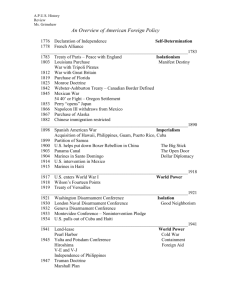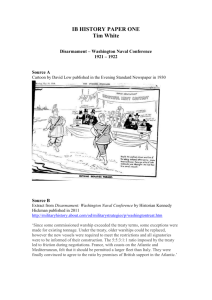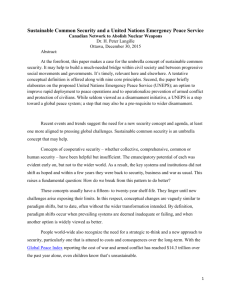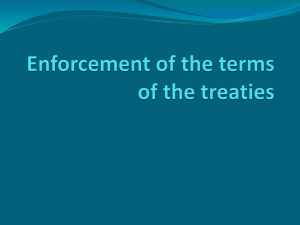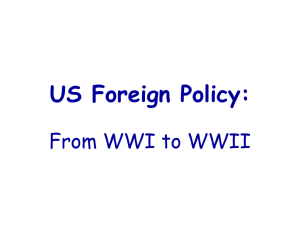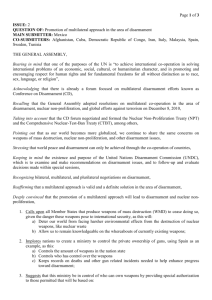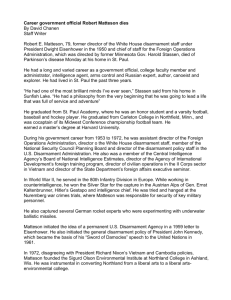Notes on Disarmament
advertisement
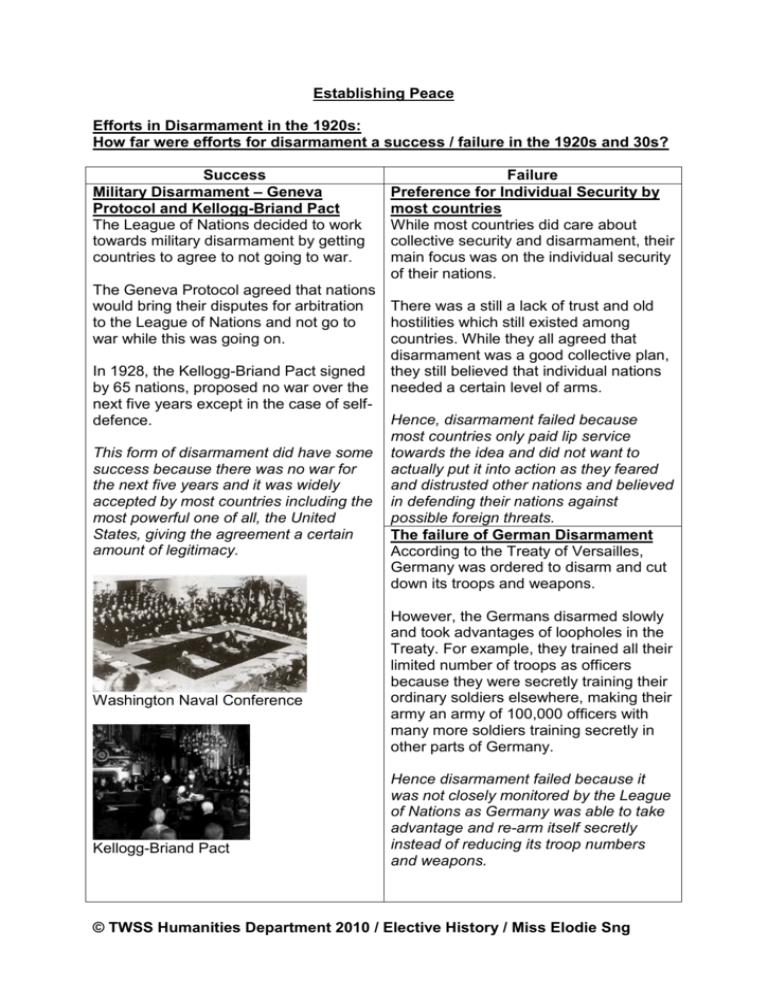
Establishing Peace Efforts in Disarmament in the 1920s: How far were efforts for disarmament a success / failure in the 1920s and 30s? Success Military Disarmament – Geneva Protocol and Kellogg-Briand Pact The League of Nations decided to work towards military disarmament by getting countries to agree to not going to war. Failure Preference for Individual Security by most countries While most countries did care about collective security and disarmament, their main focus was on the individual security of their nations. The Geneva Protocol agreed that nations would bring their disputes for arbitration There was a still a lack of trust and old to the League of Nations and not go to hostilities which still existed among war while this was going on. countries. While they all agreed that disarmament was a good collective plan, In 1928, the Kellogg-Briand Pact signed they still believed that individual nations by 65 nations, proposed no war over the needed a certain level of arms. next five years except in the case of selfHence, disarmament failed because defence. most countries only paid lip service This form of disarmament did have some towards the idea and did not want to success because there was no war for actually put it into action as they feared the next five years and it was widely and distrusted other nations and believed accepted by most countries including the in defending their nations against most powerful one of all, the United possible foreign threats. States, giving the agreement a certain The failure of German Disarmament amount of legitimacy. According to the Treaty of Versailles, Germany was ordered to disarm and cut down its troops and weapons. Washington Naval Conference Kellogg-Briand Pact However, the Germans disarmed slowly and took advantages of loopholes in the Treaty. For example, they trained all their limited number of troops as officers because they were secretly training their ordinary soldiers elsewhere, making their army an army of 100,000 officers with many more soldiers training secretly in other parts of Germany. Hence disarmament failed because it was not closely monitored by the League of Nations as Germany was able to take advantage and re-arm itself secretly instead of reducing its troop numbers and weapons. © TWSS Humanities Department 2010 / Elective History / Miss Elodie Sng Naval Disarmament (Washington Naval Conference, Geneva Conference, London Conference) Naval disarmament was easier to achieve because not many countries had navies although it was difficult to get nations to agree to limit their navies. No More War Demonstration, 1920s After several rounds of negotiations, targets were set by agreeing to a ratio of shipbuilding between nations to keep the number of ships built by each nation in balance. The same proportions were applied to smaller warships and the nations involved could build submarines at a low level. Although it seemed that naval disarmament was successful as it had set out targets for countries to limit their navies, there was little or no monitoring and some of the countries involved refused to attend subsequent conferences. Military Disarmament – Treaty of Mutual Assistance In 1923, the League of Nations suggested a Treaty of Mutual Assistance where countries would agree to limit their arms but the League would come to their assistance if they were attacked. Unfortunately, this was a failure because few countries agreed to it as they did not think the League of Nations, which had no armed force of its own, would have the power to render military assistance to them if the need arose. Please take note that you have to work out the weighing portion on your own. When doing so, take note that you have to focus on answering HOW FAR was disarmament a success or a failure and WHY... © TWSS Humanities Department 2010 / Elective History / Miss Elodie Sng
